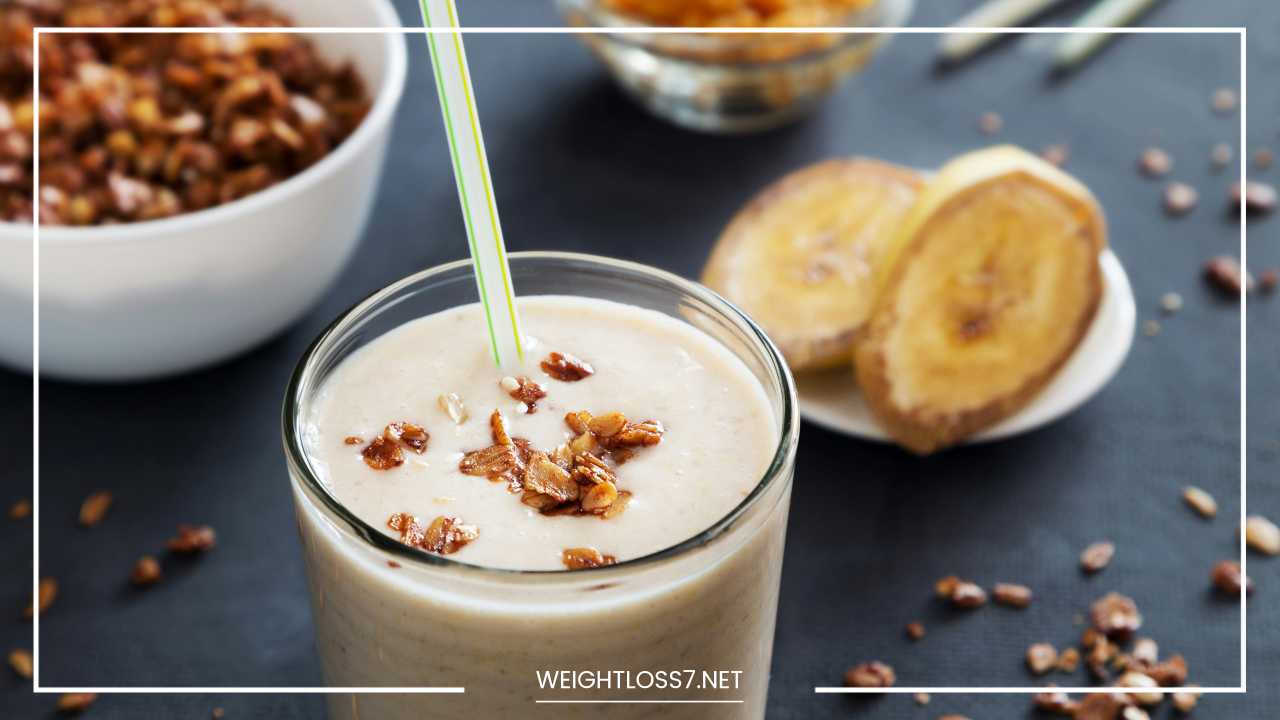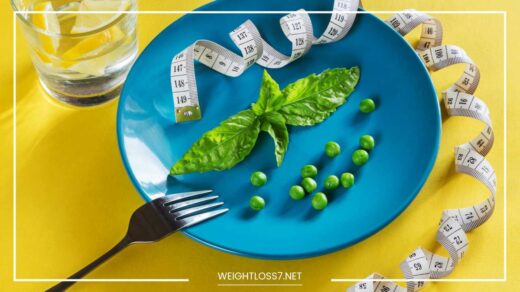High Protein Diet Plan for Weight Loss

Protein Diet Plan
Shedding Weight with Satisfaction: A High-Protein Diet Plan for Success
For many, weight loss is a relentless odyssey. We wage war against cravings, grapple with hunger pangs, and sometimes feel defeated by slow progress. But what if there was a path to weight loss that kept you feeling full and energized? Enter the high-protein diet plan!
This strategic approach prioritizes protein, a macronutrient that acts as a satiety powerhouse and has the potential to boost your metabolism.
By incorporating more protein into your meals and snacks, you can achieve your weight loss goals without feeling like you’re constantly on a restrictive diet.
Why Protein? The Unsung Hero of Weight Management
Protein isn’t just for sculpting physiques at the gym. It’s an essential building block for every cell in your body. It plays a vital role in muscle growth and repair, hormone regulation, and, most importantly for weight loss, keeps you feeling full for longer stretches. Here’s how protein contributes to your weight loss journey:
- Enhanced Satiety: Protein promotes the release of hormones like leptin, which signals fullness to your brain. This translates to reduced cravings and helps you eat less throughout the day, keeping you in a calorie deficit – the key to weight loss.
- Increased Metabolism: Digesting protein requires more energy than digesting carbohydrates or fats. This process, called thermogenesis, gives your metabolism a slight but significant boost, helping you burn more calories even at rest. Every bit counts!
- Muscle Preservation: During weight loss, some muscle loss is inevitable. However, protein helps preserve muscle mass, which is crucial for maintaining a healthy metabolism and burning calories efficiently. Muscle tissue burns more calories than fat tissue, even at rest, so preserving muscle mass keeps your metabolic fire burning bright.
Crafting Your High-Protein Diet Plan: A Personalized Roadmap
Now that you understand the power of protein as a weight loss ally, let’s embark on building your personalized high-protein diet plan!
Step 1: Decoding Your Protein Needs
The amount of protein you need depends on several factors, including your weight, activity level, and goals. A general guideline suggests 0.8 grams of protein per kilogram of body weight (or 0.36 grams per pound). However, for weight loss, aiming for 1-1.5 grams per kilogram (0.45-0.68 grams per pound) is often recommended.
Here’s a helpful tip: To calculate your daily protein needs, multiply your body weight in kilograms by 1.2 (or multiply your weight in pounds by 0.55). This will give you a personalized starting point.
Step 2: Protein Powerhouses: A Shopping List for Success
There’s a whole world of protein-rich options beyond the standard chicken breast! Here’s a diverse selection to keep your meals exciting and your taste buds happy:
Lean Meats and Poultry: Chicken breast, turkey breast, lean cuts of beef, pork, and lamb are excellent sources of complete protein, containing all the essential amino acids your body needs.
Seafood: Salmon, tuna, sardines, shrimp, and other options are packed with protein and omega-3 fatty acids, which are beneficial for heart health and inflammation reduction.
Eggs: A complete protein source, affordable, and incredibly versatile, eggs are a breakfast staple but can be enjoyed for any meal.
Dairy: Greek yogurt, cottage cheese, and low-fat milk provide protein and calcium, which is crucial for bone health. Opt for plain varieties and add your own fruit or flavorings to control sugar intake.
Plant-Based Proteins: Beans, lentils, tofu, tempeh, quinoa, and nuts and seeds offer a fantastic protein option for vegetarians and vegans. Experiment with different varieties to discover your favorites.
Step 3: Building Balanced Meals and Snacks: The Art of Plate Composition
While protein is a key player, don’t forget to create well-rounded meals that include healthy fats, complex carbohydrates, and fiber. These additional nutrients ensure satiety, provide sustained energy, and promote overall health. Here’s a sample structure to guide you:
- Breakfast: Start your day strong with options like Greek yogurt with berries and nuts, scrambled eggs with whole-wheat toast and avocado, or a protein smoothie with spinach and banana.
- Lunch: Keep midday hunger at bay with satisfying choices like a grilled chicken salad with quinoa and vegetables, lentil soup with a whole-wheat roll and a sliced apple, or a tuna salad sandwich on whole-wheat bread with a side salad.
- Dinner: Make dinner a delightful and protein-rich experience with baked salmon with roasted asparagus and quinoa, turkey chili with a side salad, or a tofu stir-fry with brown rice and mixed vegetables.
- Snacks: Don’t let hunger pangs derail your progress. Keep healthy, protein-rich snacks on hand like cottage cheese with chopped vegetables, hard-boiled eggs, a handful of almonds or mixed nuts, or a protein bar (choose ones low in sugar and artificial ingredients).
Step 4: Sample Meal Plan for a Week: A Blueprint for Action
Here’s a delicious and protein-packed sample meal plan to inspire your high-protein journey. Feel free to adjust it based on your preferences and dietary needs:
-
Day 1:
- Breakfast: Scrambled eggs with spinach and a whole-wheat tortilla filled with salsa and cheese.
- Lunch: Arugula salad with grilled chicken breast, sliced avocado, and a balsamic vinaigrette dressing. Pair it with a side of whole-wheat crackers.
- Dinner: Baked salmon with roasted Brussels sprouts and quinoa. Drizzle with a lemon-herb sauce for extra flavor.
- Snacks: Greek yogurt with berries, carrot sticks with hummus.
-
Day 2:
- Breakfast: Protein smoothie with spinach, banana, almond milk, and a scoop of protein powder.
- Lunch: Lentil soup with a whole-wheat roll and a sliced apple.
- Dinner: Chicken stir-fry with brown rice and mixed vegetables. Add a drizzle of low-sodium soy sauce for a savory touch.
- Snacks: Cottage cheese with chopped tomato and cucumber, handful of almonds.
-
Day 3:
- Breakfast: Greek yogurt with granola and sliced pear.
- Lunch: Black bean burger on a whole-wheat bun with a side of sweet potato fries. Baked sweet potatoes are a healthier alternative to fried versions.
- Dinner: Shrimp scampi with whole-wheat pasta and steamed broccoli.
- Snacks: Hard-boiled eggs, baby carrots with sugar-snap peas.
-
Day 4:
- Breakfast: Scrambled tofu with chopped vegetables and a slice of whole-wheat toast.
- Lunch: Tuna salad sandwich on whole-wheat bread with lettuce and tomato.
- Dinner: Baked cod with roasted asparagus and quinoa.
- Snacks: Cottage cheese with pineapple chunks, a handful of mixed nuts.
-
Day 5:
- Breakfast: Protein pancakes made with whole-wheat flour, topped with berries and a dollop of Greek yogurt.
- Lunch: Chicken Caesar salad with a light vinaigrette dressing.
- Dinner: Turkey chili with a side of brown rice and chopped avocado.
- Snacks: Apple slices with almond butter, celery sticks with hummus.
-
Day 6 & 7: Use this as an opportunity to experiment with your own protein-rich creations! Refer to the protein powerhouses list and meal structure guide for inspiration.
Remember, this is just a sample! Feel free to adjust it based on your preferences and dietary needs. There’s a world of delicious and protein-rich options waiting to be explored.
Step 5: Essential Tips for Success: Your Guide to Long-Term Results
Following a high-protein diet plan is a great start, but here are some additional tips to maximize your weight loss success and make healthy habits sustainable:
- Stay Hydrated: Drinking plenty of water throughout the day keeps you feeling full, reduces cravings, and flushes out toxins. Aim for eight glasses of water daily, but adjust based on your activity level and climate.
- Fiber is Your Friend: Include plenty of fiber-rich fruits, vegetables, and whole grains in your diet. Fiber promotes satiety and keeps your digestive system functioning smoothly.
- Read Food Labels: Become a label-reading pro! Pay attention to portion sizes, protein content, and added sugars. Opt for lean protein sources and limit processed foods.
- Plan and Prep: Planning your meals and snacks in advance helps you stay on track and avoid unhealthy choices when hunger strikes. Consider prepping some meals or ingredients on the weekend to save time during the week.
- Strength Training is Key: Don’t just focus on cardio! Strength training helps build and maintain muscle mass, which boosts your metabolism and aids in weight loss. Aim for at least two to three strength training sessions per week.
- Mindful Eating: Slow down and savor your food. Pay attention to your body’s hunger and fullness cues. Avoid distractions like watching TV while eating.
- Find an Accountability Partner: Having a friend or family member join you on your weight loss journey can provide valuable support and motivation.
- Celebrate Non-Scale Victories: Weight loss isn’t just about the numbers on the scale. Celebrate your non-scale victories too! This could be increased energy levels, improved sleep, better fitting clothes, or simply feeling more confident.
- Be Patient and Kind to Yourself: Weight loss is a journey, not a race. There will be setbacks along the way. Don’t get discouraged; pick yourself up, learn from the experience, and keep moving forward. Remember, self-compassion is key to long-term success.
- Consult a Healthcare Professional: If you have any underlying health conditions or are unsure about starting a new diet plan, consult a registered dietitian or healthcare professional for personalized guidance.
Beyond Weight Loss: The Long-Term Benefits of a High-Protein Diet
While weight loss is a common goal, a high-protein diet offers a multitude of benefits that extend beyond the scale:
- Improved Muscle Health: Protein is essential for building and maintaining muscle mass. This is important not just for physical appearance but also for maintaining bone health, strength, and mobility, especially as we age.
- Enhanced Satiety and Appetite Control: As mentioned earlier, protein helps you feel fuller for longer, which can lead to reduced calorie intake and better weight management in the long run.
- Blood Sugar Control: Protein can help regulate blood sugar levels, potentially reducing the risk of type 2 diabetes.
- Stronger Bones: Protein, along with calcium and vitamin D, plays a crucial role in maintaining strong bones and reducing the risk of osteoporosis.
- Improved Immune Function: Protein is essential for the production of antibodies, which help fight off infections and keep you healthy.
A Word on Sustainability: Making High-Protein Living a Lifestyle
Crash diets and restrictive fads are rarely sustainable. The key to long-term success is to make healthy, protein-rich choices a part of your lifestyle. Here are some tips:
- Focus on Whole Foods: Prioritize whole, unprocessed foods like lean protein sources, vegetables, fruits, and whole grains. These foods are packed with nutrients your body needs to thrive.
- Cook More at Home: Cooking at home allows you to control the ingredients and portion sizes of your meals. Experiment with new recipes and discover healthy protein-rich dishes you enjoy.
- Find Healthy Alternatives: Craving a burger? Make a lean turkey burger or a black bean burger on a whole-wheat bun. Love pasta? Opt for whole-wheat pasta and pair it with a protein-rich sauce and vegetables. There are healthy alternatives for most of your favorite foods.
- Make Small, Sustainable Changes: Don’t overwhelm yourself with drastic changes. Start by incorporating small, sustainable changes into your routine. Gradually swap sugary drinks for water, add a protein source to breakfast, or replace refined grains with whole grains.
- Don’t Deprive Yourself: Allow yourself occasional treats in moderation. Deprivation can lead to cravings and overeating later.
Remember, a healthy lifestyle is about feeling good and having a positive relationship with food. By following a high-protein diet that’s personalized, sustainable, and enjoyable, you can achieve your weight loss goals and experience a multitude of health benefits for the long term.

















